Key takeaways
- Paranormal infotainment focuses on merging storytelling with the unknown, fostering curiosity and imagination.
- Technology, such as EMF detectors and EVP recorders, enhances ghost hunting by providing tangible data, but remains open to interpretation.
- Effective ghost hunting requires preparation, context understanding, and patience when analyzing data for valid findings.
- Ultimately, technology enriches investigations but does not provide absolute proof, encouraging a nuanced balance between belief and skepticism.
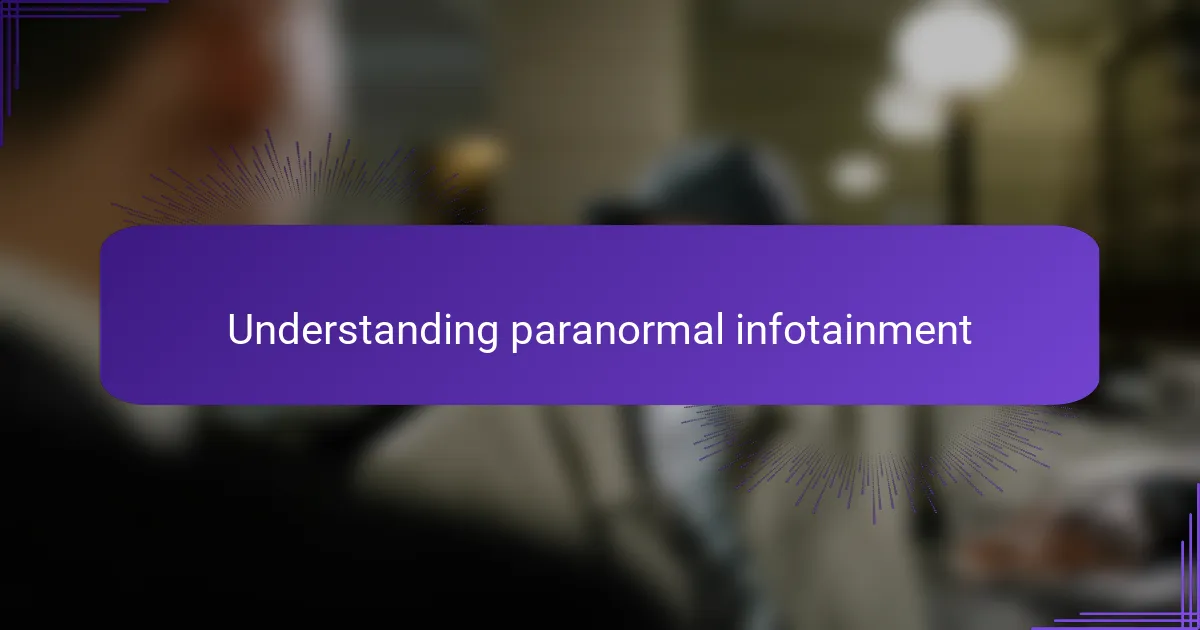
Understanding Paranormal Infotainment
Paranormal infotainment blends the intrigue of the unknown with the thrill of storytelling, creating a unique space where curiosity thrives. I often find myself drawn to its mix of fact, theory, and a dash of mystery—doesn’t it make you wonder what truths might be hidden just beyond our perception?
What fascinates me most is how this genre invites us to question reality, pushing the boundaries between what we know and what we fear or hope to discover. Have you ever felt that chill of excitement when a ghost story feels just believable enough? That emotional connection is what keeps paranormal infotainment so compelling.
In my experience, it’s not just about scares or suspense—it’s about exploring human imagination and our deep-seated desire to connect with something bigger than ourselves. Isn’t that, after all, the essence of every good story?
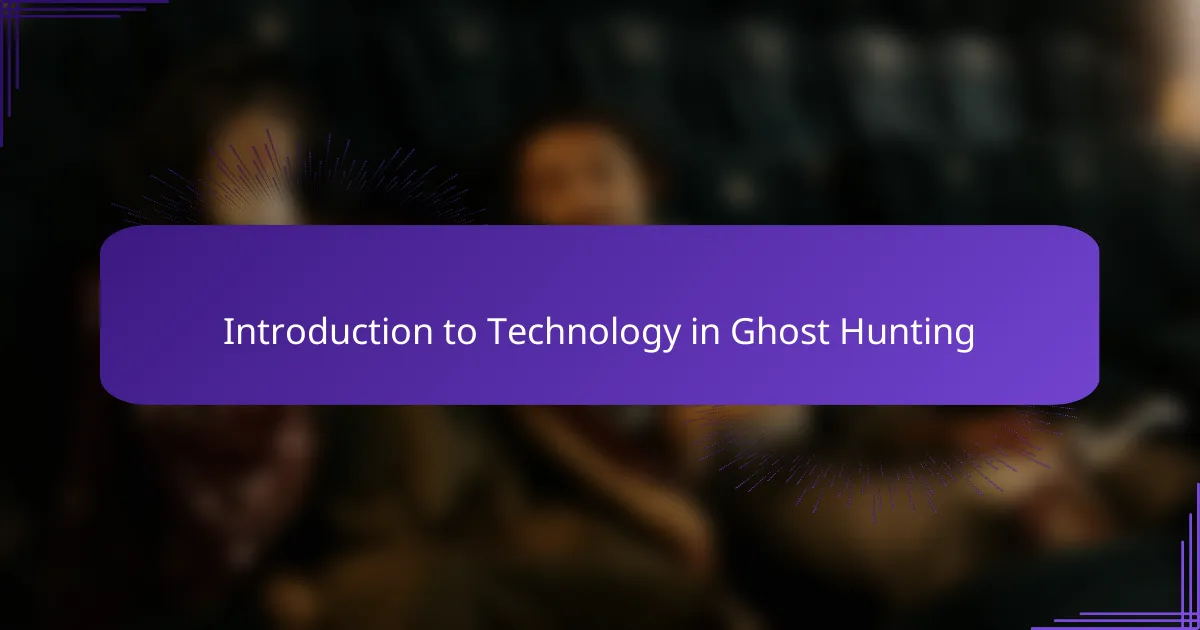
Introduction to Technology in Ghost Hunting
Technology in ghost hunting has always fascinated me because it bridges the gap between ancient folklore and modern science. When I first held an EMF detector, a device designed to pick up electromagnetic fields that some believe spirits manipulate, I felt as if I had a key to an unseen world. Isn’t it amazing how gadgets can turn a haunting from a mere story into an interactive investigation?
Yet, technology doesn’t just serve as proof; it shapes the way we experience and interpret paranormal phenomena. I’ve noticed that tools like thermal cameras or EVP recorders (which capture electronic voice phenomena) transform vague sensations into tangible data. This makes me wonder—do these devices reveal ghosts, or do they reveal our own desire to find meaning in the unknown?
From my perspective, the role of technology in ghost hunting is both practical and poetic. It empowers us to explore uncharted territories with a sense of curiosity and respect while feeding the imagination that paranormal infotainment thrives on. Have you ever considered how these tools might alter the stories we tell and the mysteries we chase?
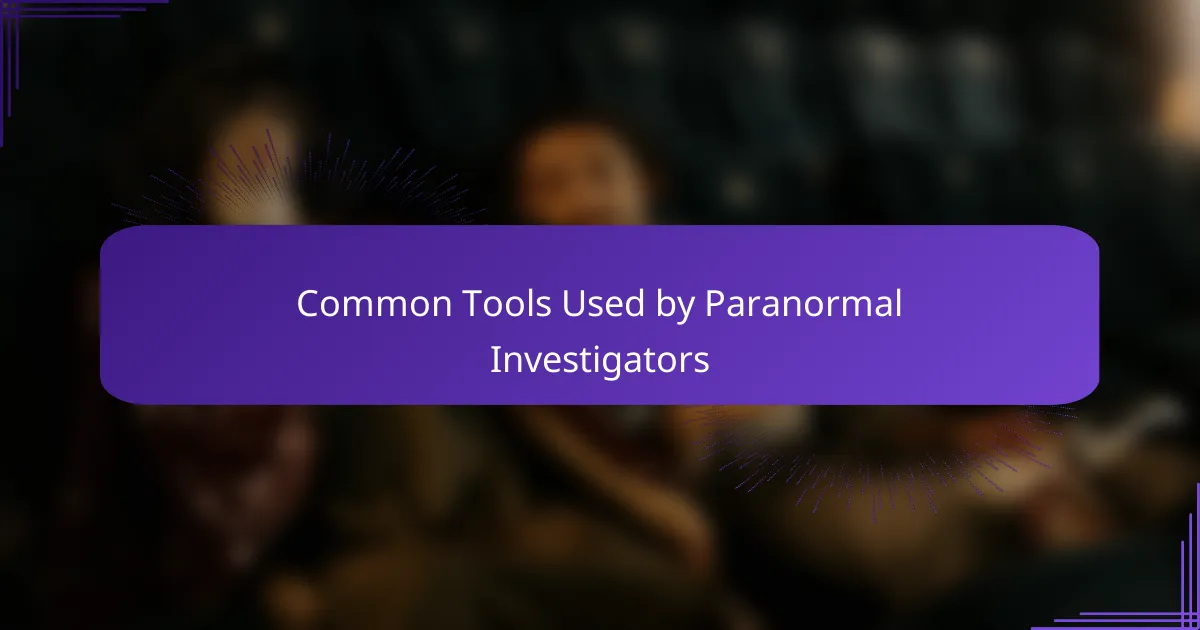
Common Tools Used by Paranormal Investigators
One of the first tools I reached for during my early ghost hunts was the EMF detector. It’s fascinating to hold this small device that supposedly senses electromagnetic fluctuations — a phenomenon often linked to spirits. Handling it made me feel like a modern-day explorer, tuning into frequencies invisible to the [censured] eye. Have you ever wondered if these spikes truly signal something otherworldly, or if our minds fill in the gaps when the numbers jump?
Cameras that capture infrared or thermal images quickly became another favorite in my kit. The idea that heat signatures might reveal a presence beyond our normal senses intrigued me deeply. During one investigation, a sudden cold spot appeared right where the thermal camera caught a vague silhouette — it sent a shiver down my spine. Could technology be translating the language of ghosts into images our eyes can understand?
Then there are the EVP recorders, devices that pick up mysterious sounds often unheard by human ears. Listening back to hours of static and faint whispers can feel like piecing together a spectral puzzle. I’ve found myself leaning into the recordings, trying to discern meaning where there might only be coincidence. What do you think—is it genuine communication, or a reflection of our yearning to hear a voice from beyond?
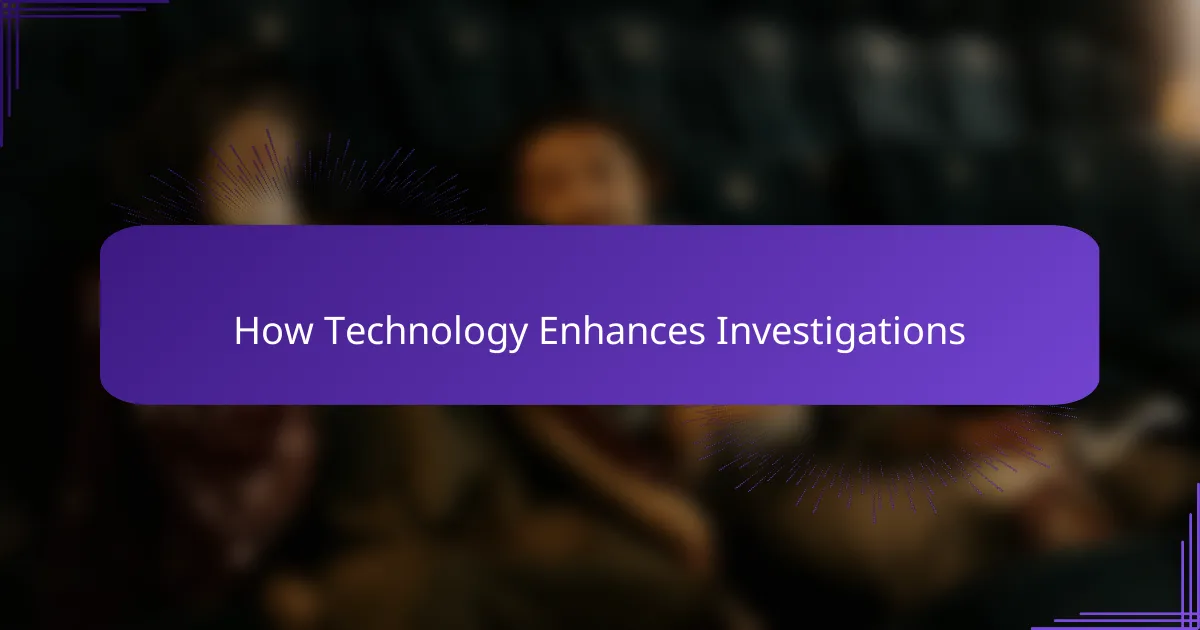
How Technology Enhances Investigations
When I first started using technology in ghost hunting, I was amazed at how much clearer investigations became. Devices like thermal cameras and EMF detectors don’t just collect data—they give me a tangible connection to something often described as intangible. Have you ever felt that moment of disbelief when you see numbers spike or heat signatures flicker, and wonder if you’ve just brushed against the paranormal?
Sometimes, technology acts like a translator between us and the unknown. For instance, EVP recorders capture whispers that are otherwise impossible to hear, turning eerie silence into a stream of possible messages. I remember reviewing a recording where a faint voice seemed to call my name—was it real, or just the brain’s pattern-seeking? Either way, it made the investigation all the more personal and thrilling.
What strikes me most is how technology helps focus our attention and sharpens our senses. Instead of relying solely on feelings or hearsay, having measurable data changes the investigation’s dynamic entirely. It’s like having a flashlight in a dark room—you still need to interpret what you see, but suddenly the unknown feels a little less daunting. Don’t you think that’s where science meets spirit, creating a fascinating blend of mystery and method?
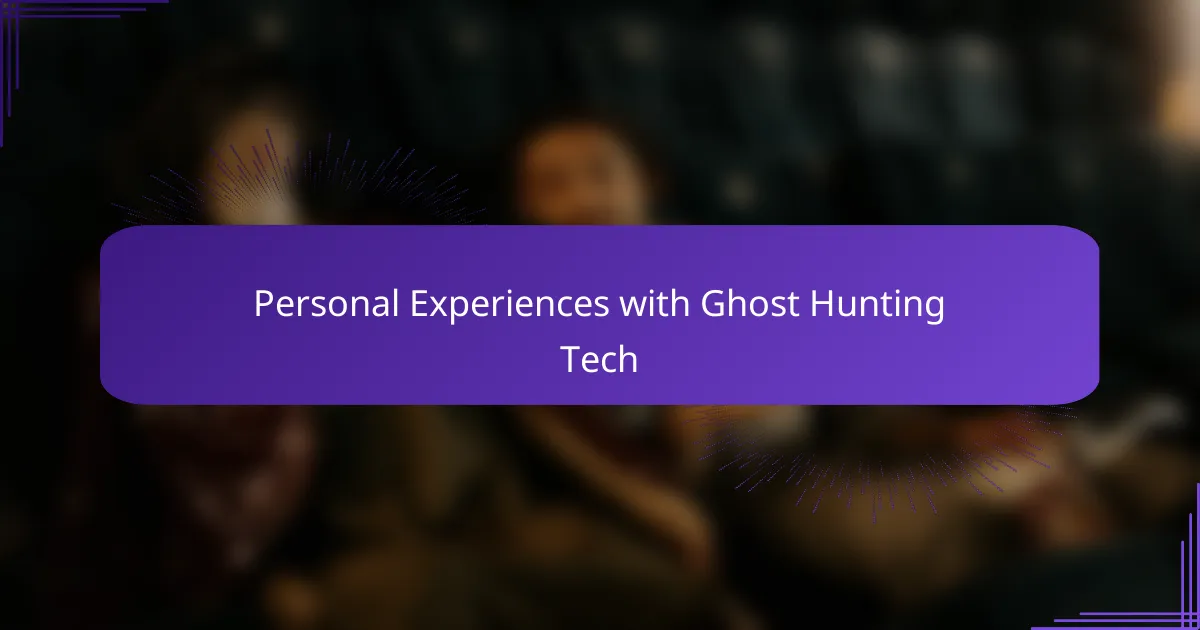
Personal Experiences with Ghost Hunting Tech
During one chilly night investigating an old Victorian house, I remember my EMF detector suddenly spiking with no explanation. That surge sent a rush of adrenaline through me, stirring a question I often wrestle with—was it really a spirit, or just interference from an unseen source? Moments like those make the technology feel less like a tool and more like a doorway, even if uncertainty lingers.
I once used a thermal camera in an abandoned asylum where I felt an icy presence nearby. Watching the screen flicker with a faint, unexplained heat signature gave me chills—not just from the cold, but from the silent possibility that something unseen was lurking. It was a vivid reminder of how technology can capture fragments of experiences our eyes alone might miss, deepening the emotional heft of the investigation.
Listening to EVP recordings has been one of the most puzzling and personal parts of my ghost hunting. There was a time I distinctly heard what sounded like a whisper saying my name on a tape review, which sent a shiver down my spine. It made me wonder—are these voices genuine attempts at contact, or are we simply projecting hope and fear onto random sounds? Either way, those moments make the investigation deeply human for me.
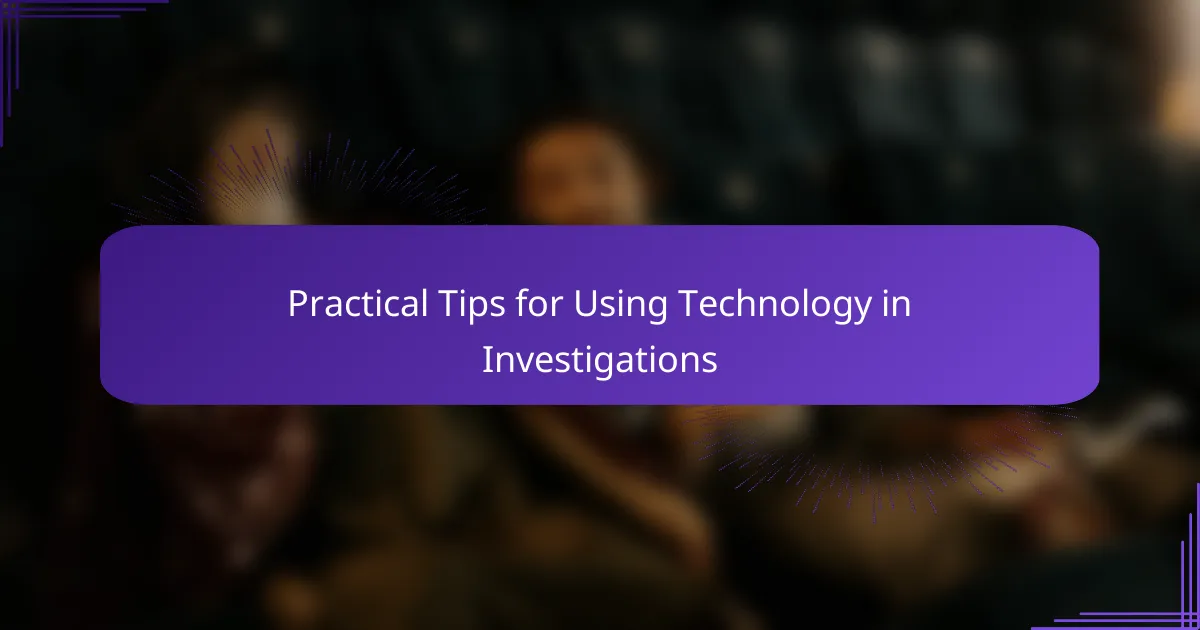
Practical Tips for Using Technology in Investigations
One practical tip I always keep in mind is to test your equipment thoroughly before heading out. There’s nothing more frustrating than chasing a phantom only to find your EMF detector’s batteries are dead or your EVP recorder isn’t picking up any sound. Have you ever had that sinking feeling when tech fails mid-investigation? I have, and it really breaks the flow, so preparation feels like a small but crucial ritual.
Another thing I’ve learned is that context matters immensely when interpreting data. For example, a sudden EMF spike might excite you, but could it simply be caused by a nearby electrical appliance? I find it helps to map out the environment beforehand and note any possible interference sources. It’s like being a detective, sorting through clues to separate genuine anomalies from everyday noise.
Finally, patience is key. Reviewing EVP recordings, for instance, can be a slow, sometimes maddening process—hours of static punctuated by brief, unclear snippets. I remind myself to approach it with an open mind and not rush to conclusions. After all, isn’t the thrill partly in that delicate balance between skepticism and belief? This mindset keeps the investigation grounded but still open to wonder.
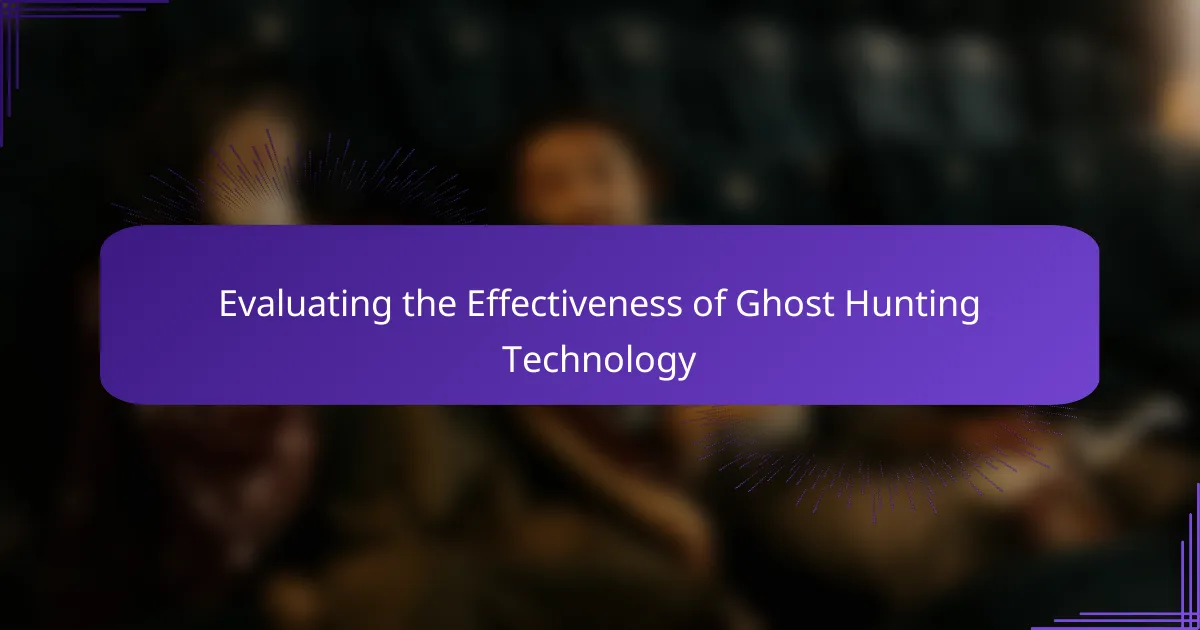
Evaluating the Effectiveness of Ghost Hunting Technology
Evaluating the effectiveness of ghost hunting technology is a complex task because these tools often operate in a space between science and speculation. I’ve noticed that while devices like EMF detectors and thermal cameras provide intriguing data, they don’t offer definitive proof—more often, they raise more questions than answers. Have you ever wondered if a sudden spike or flicker is genuinely paranormal, or just a quirk of the device? That uncertainty keeps the experience both thrilling and, to me, humbling.
From my experience, the real value of these technologies lies less in their absolute accuracy and more in how they enhance our awareness and focus during investigations. When an EVP recorder picks up a mysterious whisper or a camera captures an unexplained shadow, it invites us to dig deeper and reflect. Yet, I’ve learned to approach these moments with healthy skepticism, knowing that our brains are wired to seek patterns even in random noise. Isn’t it fascinating how technology shapes not only what we detect but also how we interpret it?
I recall one investigation where my thermal camera showed a fleeting heat anomaly in an otherwise cold room. It sparked a surge of excitement, but reviewing the footage later, I questioned whether it was a technical artifact or something truly unexplained. That push-and-pull between belief and doubt defines much of what makes technology’s role in ghost hunting so compelling. It reminds me that, at its core, technology is a tool—a lens through which we explore mysteries, not a magic wand that delivers absolute answers.